Alyssum flowers - a fragrant rainbow in your garden
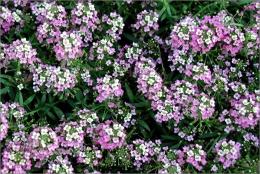
Alyssum or alyssum, a widespread plant from the cabbage (cruciferous) genus. There are more than one hundred and fifty species in the wild. About 40 species grow in Russia and the CIS countries. Alyssum flowers have been known in gardening since the 18th century. Unpretentiousness, variety of colors, wonderful aroma - all this applies to this plant.
Content:
Botanical description
Herbaceous, annual or perennial. There are also semi-shrub species. Widespread in Europe, Asia, and northern Africa. Small flowers, yellow, white, purple, are collected in panicles. After flowering, pods with very small seeds remain. A wonderful honey plant. Wild species of alyssum were actively used in the selection of garden varieties:
- alyssum curved
- mountain alyssum
- alyssum obovate
- desert alyssum
- alyssum rocky
Thanks to its unpretentiousness and long-lasting flowering period very popular among flower growers all over the world. Also used in folk medicine. In Altai, decoctions of alyssum are used for inguinal hernias and kidney stones. Many nations have a recognized anti-cold remedy. And also as a diuretic and laxative. In cosmetology it is used to lighten freckles and age spots.
Alyssum annual
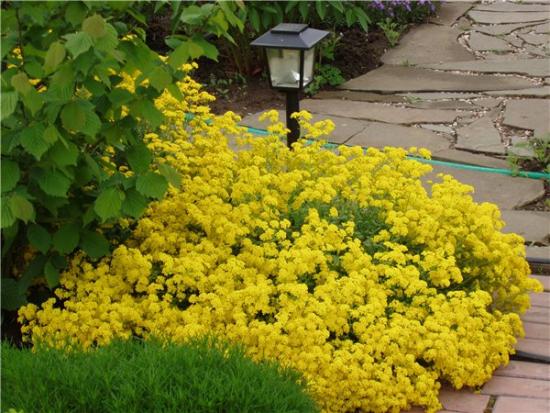
In gardening you can find this plant called mason or alyssum. Annual and perennial forms are grown.Ideal as a border and ground cover plant. Pleasant aroma makes it indispensable when decorating the local area, in parks and squares. Looks good in flowerpots and pots on balconies, loggias, and verandas. Due to its long flowering, it is widely used in rock gardens.
In gardens, annuals are represented by the following forms:
- Alyssum Bentham
- Alyssum variegated
- Alyssum compact
- Alyssum prostrate
Many varieties and hybrids have been obtained from the original forms, which are easy to grow from seeds.
Alyssum annual seeds are sown in pre-prepared light soil in a well-lit place. Sowing time is from mid-April. In climates where the soil has not thawed by this time, it is better to sow seeds in the fall or pre-grow seedlings.
To achieve early flowering, it is important not to be late with seedlings and sow alyssum seeds no later than the first days of March. Since the seeds are very small, sow slowly, as if “salting” the soil, compact it, pressing it with your palms to the ground. Do not cover the seeds with soil on top.
Try not to plant too densely, as thickened shoots grow poorly and get sick more often. The first shoots may appear as early as the fifth day. As the planting grows, it is necessary to thin out, the optimal intervals between flowers are at least 10 cm. If you sow the seeds in mid-April, then the first flowering can be seen after 60 days - in mid-June. When planted before winter or as seedlings, alyssum will bloom 10-14 days earlier.
Seedlings in open ground plant in mid-May, at a distance of 20 cm - 40 cm. To prevent flowering from stopping earlier in dry summers, moderate regular watering is required. The first flowering ends in July.Then carry out mandatory pruning of the shoots to stimulate re-flowering.
Alyssum perennial
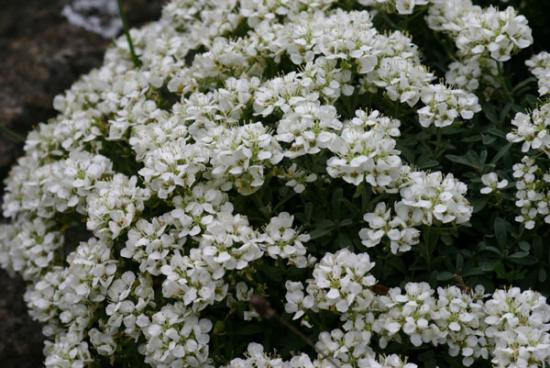
Perennial alyssums differs in a variety of forms: from dwarfs to giants, from herbaceous forms 8 cm in height to half-lignified subshrubs with stems of 80 cm. Frost resistance, undemandingness and decorativeness of garden forms were conveyed by the original species:
- Alyssum Gmelina (mountain) - low-growing bushes from 10 cm in height, on which the first light yellow flowers appear in April
- Marine alyssum is a perennial plant, but in Russia it is grown as an annual plant, a rosette-shaped bush, up to 40 cm in height, white and purple flowers. Flowering begins in early summer and blooms until frost
- Alyssum pirinensis - bushes up to 20 cm high, with silvery pubescent leaves, blooms from June to August
- Creeping alyssum - bushes up to 60 cm in height, basal leaves are oval in shape and collected in a rosette, stem leaves are narrow and elongated. Flowering time - May, yellow flowers.
- Silver alyssum is the tallest, up to 80 cm, lemon-colored flowers, blooming in May - July.
- Rocky alyssum - almost spherical bushes, blooms already in April, golden flowers.
- Currently, the following variety mixtures and hybrids are very popular:
- Procumbes - a dwarf variety, no higher than 8 cm, spreads in a continuous carpet
- Oriental Night - low-growing variety, up to 10 cm, with dark purple flowers
- Paletta is a low-growing variety, up to 10 cm, flowers: white, pink, red, crimson, lilac are found on one bush.
- Plenum - characterized by long flowering, yellow, double flowers
Creeping junipers or compact spherical thujas will be good neighbors for the perennial alyssum “Golden Wave”, “Snow Carpet”; they will also complement rose gardens.
Large-flowered forms are used in cutting and for making bouquets.
Perennial alyssums can be propagated both by seeds and vegetatively. The best time to divide the bush is from May to June. Large forms should be planted at a distance of at least 40 cm. To extend the period of active flowering, it is necessary to trim the shoots to eight centimeters after the first flowering.
Perennial alyssums overwinter well, without additional shelter, but it should be remembered that pruning is carried out either immediately after flowering or in the spring.
Annual and perennial alyssums are quite resistant to various kinds of diseases, but if growing conditions are violated, they can be affected by:
- White rust, which causes leaf damage and plant death. Spraying with Topaz is effective.
- Downy mildew, at an early stage and for prevention, is well sprayed with the biological product "Bektafit".
- Viral mosaic, in the fight against which it is necessary to destroy flower aphids with any insecticidal preparation and spray the plants for prevention with Aktar.
To grow healthy flowering plants, it is important to purchase high-quality planting material. It is safe and convenient to purchase alyssum seeds and seedlings in specialized stores, including online.
Video about growing mountain alyssum:
Interesting information about the vegetable garden

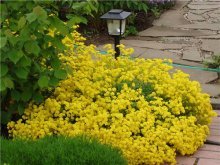
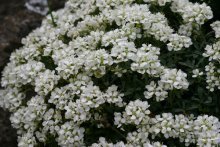


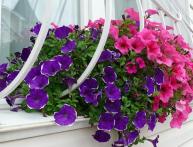

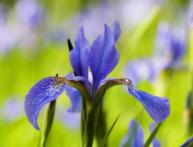

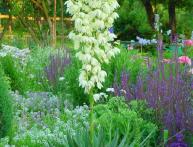
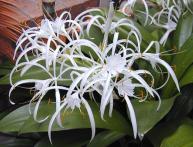
Comments
Last year I planted several bags of seeds in the flowerbed at once, but only 4 bushes sprouted, which grew very much and were pleasing to the eye even after slight frosts and the first snow. This year I will not make such a mistake, so as not to end up without seedlings at all, I will first plant them at home in peat tablets. Very beautiful and fragrant flowers!